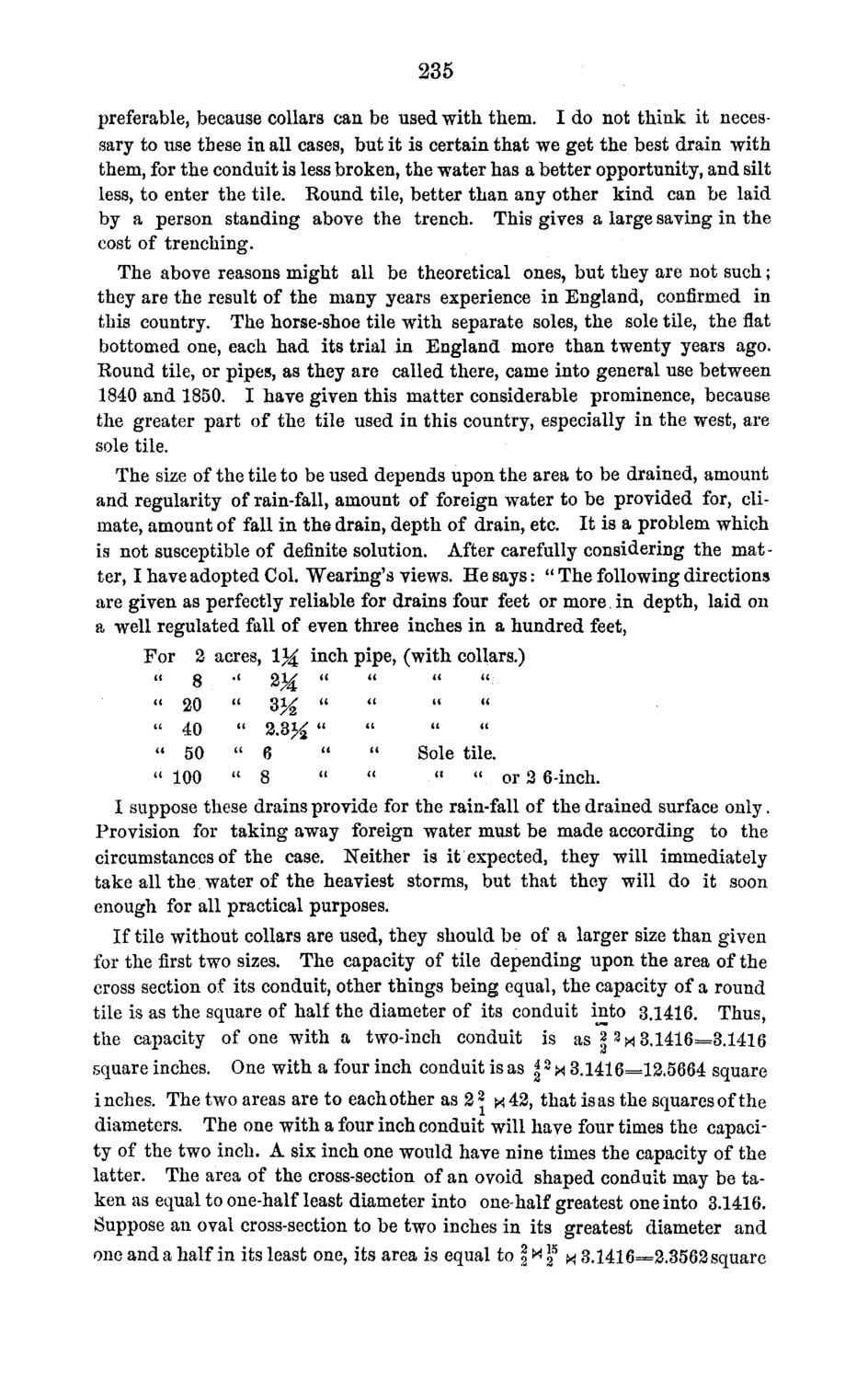| |
| |
Caption: Board of Trustees Minutes - 1870
This is a reduced-resolution page image for fast online browsing.

EXTRACTED TEXT FROM PAGE:
235 preferable, because collars can be used with them. I do not think it necessary to use these in all cases, but it is certain that we get the best drain with them, for the conduit is less broken, the water has a better opportunity, and silt less, to enter the tile. Round tile, better than any other kind can be laid by a person standing above the trench. This gives a large saving in the cost of trenching. The above reasons might all be theoretical ones, but they are not such; they are the result of the many years experience in England, confirmed in this country. The horse-shoe tile with separate soles, the sole tile, the flat bottomed one, each had its trial in England more than twenty years ago. Round tile, or pipes, as they are called there, came into general use between 1840 and 1850. I have given this matter considerable prominence, because the greater part of the tile used in this country, especially in the west, are sole tile. The size of the tile to be used depends upon the area to be drained, amount and regularity of rain-fall, amount of foreign water to be provided for, climate, amount of fall in the drain, depth of drain, etc. It is a problem which is not susceptible of definite solution. After carefully considering the matter, I have adopted Col. Wearing's views. He says: " The following directions are given as perfectly reliable for drains four feet or more in depth, laid on a well regulated fall of even three inches in a hundred feet, For 2 acres, 1J£ inch pipe, (with collars.) " 8 • < m " " " " " 20 " Z% " " " " " 40 " 2.3}£ " " 50 " 6 " " Sole tile. " 100 " 8 " " " " or 2 6-inch. I suppose these drains provide for the rain-fall of the drained surface only. Provision for taking away foreign water must be made according to the circumstances of the case. Neither is it expected, they will immediately take all the water of the heaviest storms, but that they will do it soon enough for all practical purposes. If tile without collars are used, they should be of a larger size than given for the first two sizes. The capacity of tile depending upon the area of the cross section of its conduit, other things being equal, the capacity of a round tile is as the square of half the diameter of its conduit into 3.1416. Thus, the capacity of one with a two-inch conduit is as 12 M 3,1416=3.1416 square inches. One with a four inch conduit is as | 2 x 3.1416=12.5664 square inches. The two areas are to each other as 2 2 H 42, that is as the squares of the diameters. The one with a four inch conduit will have four times the capacity of the two inch. A six inch one would have nine times the capacity of the latter. The area of the cross-section of an ovoid shaped conduit may be taken as equal to one-half least diameter into one-half greatest one into 3.1416. Suppose an oval cross-section to be two inches in its greatest diameter and one and a half in its least one, its area is equal to \ * f x 3.1416==2.3562 square
| |